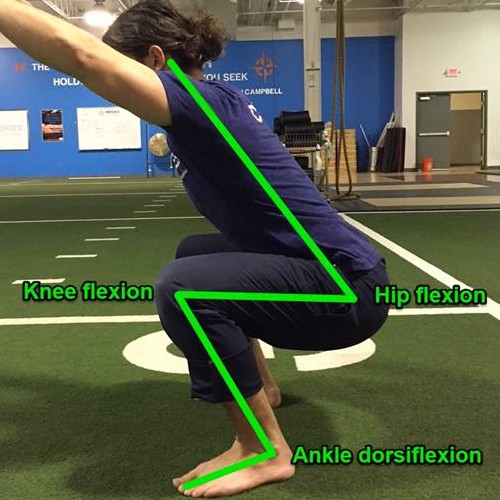Can Ankle Mobility Prevent Knee Injury?
Squatting is among the most functional of all human movements and is frequently regarded as a starting point in the movement assessments for many healthcare practitioners. Much like any refined sport-specific movement, a biomechanically efficient squat is something you just know when you see it. This efficiency in movement requires sufficient muscle strength, body awareness, balance, and joint mobility across a number of segments in the body. It is because of the multi-joint nature of squatting that it is such an effective target for assessment in order to detect mobility or strength deficits.

Ankle dorsiflexion (or the ability to bring the top of one’s foot toward their shin) is one critical element to the overall performance of a squat. The ankle and knee often work in tandem across many functional movements and a limitation in one can dramatically affect the physical demand placed on the other. In the world of ACL injury prevention and rehabilitation, there is an abundance of research pointing to the potential link between limited range of motion in ankle dorsiflexion and the resultant biomechanical implications at the knee that could contribute to an individual suffering a non-contact ACL injury. “Dynamic knee valgus” (knees collapsing inward) occurs during various sport-related movements and has traditionally been looked at as a precursor or risk factor for a non-contact ACL injury or re-injury. Many coaches and healthcare practitioners will immediately point the finger at hip weakness, knee weakness, or neuromuscular control deficits as the source of this flawed and risky movement pattern. However, a lack of range of motion in ankle dorsiflexion can fly under the radar, but could actually be a major contributor to this problem.
Mounting evidence exists (quick Google Scholar search of “ankle dorsiflexion and knee valgus”) that further solidifies the connections between knee injuries and characteristics of the joints adjacent (next to) to the knee. Screening an individual’s movement patterns during a body-weight squat can reveal an underlying deficit in an individual’s ankle motion. If this deficit exists, it could potentially translate into altered mechanics and undesired forces on the knee during squatting, running, jumping, and landing.
To end, it is becoming more apparent that ankle mobility could be a major factor in preventing knee injury and should be prioritized along with hip and core strength in the reduction of the faulty biomechanics behind ACL and other knee injuries.
If you have questions or would like to be assessed by a physical therapist at Omaha Physical Therapy Institute, give us a call at 402-934-8688!
Make an Appointment Today! »
Your Comeback Story Starts Here!
